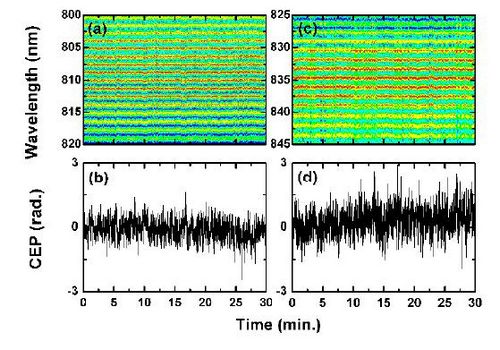As the birth of attosecond (10-18s) science based on high harmonic generation (HHG), isolated bursts of attosecond extreme ultraviolet (XUV) radiation has make it possible to probe ultrafast dynamics on attosecond level. Attosecond pulses with duration of 80as have been produced driven by few-cycle, carrier-envelope phase (CEP) stabilized laser pulses at 800 nm. To obtain higher energy harmonic supercontinuum for the shorter attosecond pulses, laser pulses with center wavelength lies in the range of 1.5-3 μm is regarded as the suitable driver.
This December, in order to obtain the laser pulses in the longer wavelength region, researchers at State Key Laboratory of High Field Laser Physics, Shanghai Institute of Optics and Fines Mechanics, Chinese Academy of Sciences (SIOM, CAS)develop a three-stage high conversion efficiency optical parametric amplifier (OPA). Benefit from the character of passive CEP stabilization of the idler pulse during the OPA process, 1.6 mJ, 57 fs pulses at 1.8 μm with rms CEP fluctuation of ~401 mrad are obtained.
After passing through an argon-filled hollow fiber and the dispersion compensator, . the pulses are finally compressed to 0.7 mJ, 8.4fs (~1.5 cycle) at 1.75 μm center wavelength, with rms CEP fluctuation of ~547 mrad. Moreover, as the phase drift is naturally eliminated in the OPA process, excellent long-term CEP stability can be expected, which has already been proved by a Terahertz (THz) emission spectroscopy experiment. The system provides an excellent laser source for isolated attosecond pulse generation and other HHG experiments.

Fig. CEP fringes (a) and phase drift (b) of the 1.8 μm pulses before the hollow fiber. CEP fringes (c) and phase drift (d) of the compressed pulses.(Image by SIOM)

